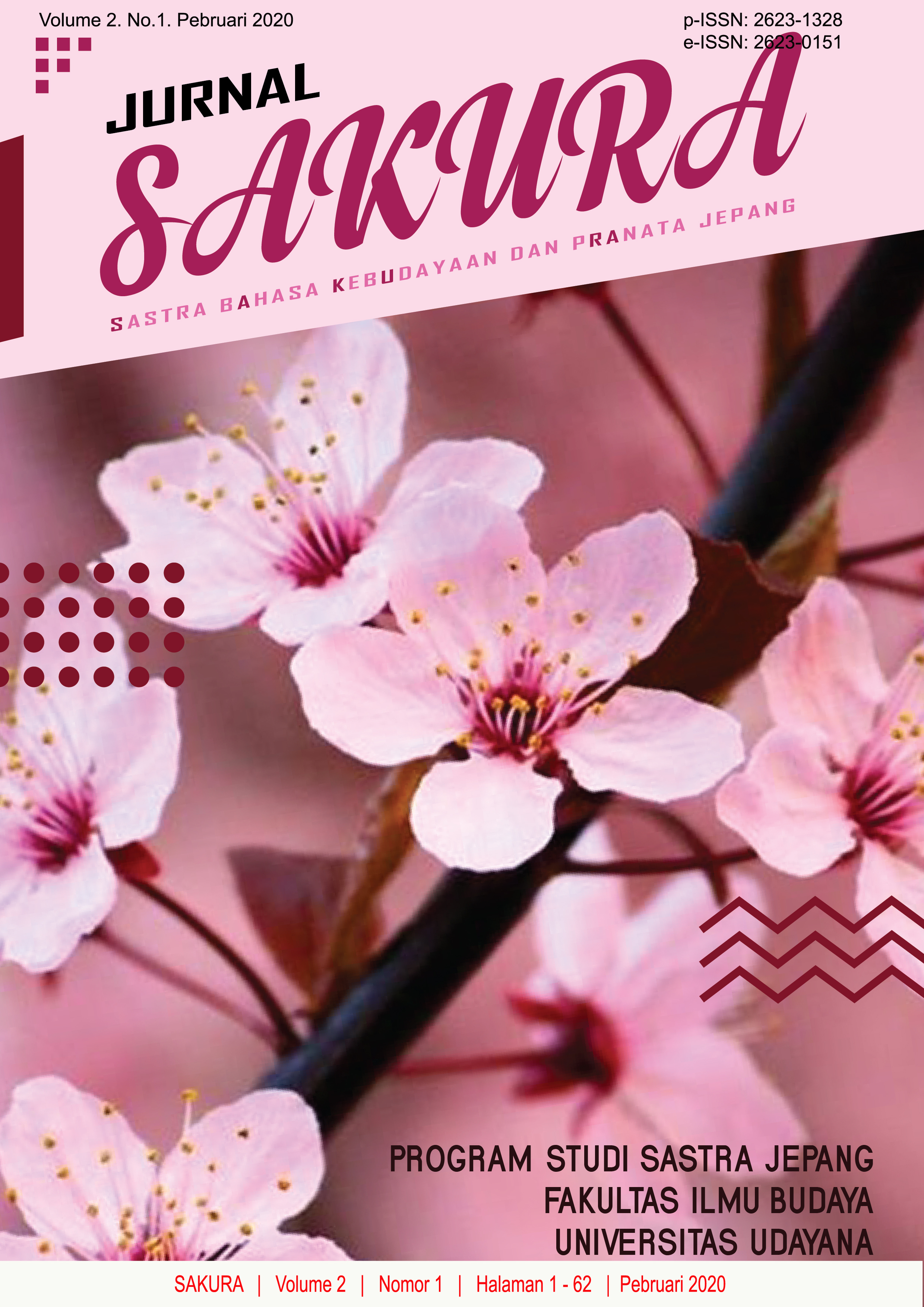Tuturan Melarang dalam Komik Yotsubato Karya Kiyohiko Azuma
Abstract
The research entitled “Speech Acts of Prohibition in Comic Yotsubato by Kiyohiko Azuma” is aimed to identify various form of speech acts of prohibition and the factors behind the use of the said speech acts in the comic Yotsubato by Kiyohiko Azuma. This research applied the theory of speech acts by Wijana (1996) and level of politeness factors according to Mizutani and Mizutani (1987). The method of collecting data used in the research is attentive observation method, which is done by observing the speech in the comic. Afterwards, the obtained data is noted by applying note-taking technique. The data analysis is done by using pragmatic identity method. Later on, in the data presentation, informal method is used. The result of the analysis indicates that in the comic Yotsubato, found 9 data that categorized as direct speech acts of prohibition and 7 data that categorized as indirect speech acts of prohibition. Then, there are 4 factors behind the use of the speech acts of prohibition in the comic Yatsubato, namely 1) familiarity factors; 2) age; 3) social distance; and 4) gender.
Downloads
References
Iori, Isao. 2000. Shokyu o Oshieru Hito no Tame no Nihonggo Bunpo Handobukku. Tokyo: Kurashiki Insatsu Kabushikigaisha.
Hamano, S dan Tsujioka, T. 2011. Basic Japanese: A Grammar and Workbook. USA: Routledge.
Kamermans, Michiel. 2009. An Introduction to Japanese Syntax, Grammar and Language [online]. Tersedia:http://www7a.biglobe.ne.jp/nifongo/conv/index.html.
Lestari, Dwi Tiara. 2017. “Kesantunan Tindak Tutur Direktif Larangan dan Izin dalam Drama Jepang Kazoku Gemu” (Skripsi). Semarang: Universitas Dipenogoro.
Mahsun. 2007. Metode dan Teknik penelitian Bahasa. Jakarta: PT. Dunia Pustaka Jaya.
Makino, S dan Tsutsui, M. 1984. A Dictionary of Basic Japanese grammar. Tokyo: The Japanese Times, Ltd.
Mizutani, O dan Mizutani, N. 1987. How to be Polite in Japanese. Tokyo: The Japanese Times, Ltd.
Novitayanti, Ni Nyoman Yeni. 2011. “Bentuk Perintah dan Larangan dalam Komik Pafechikku Karya Nanaji Nagamu” (Skripsi). Denpasar: Universitas Udayana.
Okamoto, Shigeko. 2004. Japanese Language, Gender, and Ideology. Newyork: Oxford University Press.
Satria, Chandra Putra. 2018. “Penggunaan Ungkapan Perintah dan Larangan dalam Bahasa Jepang” (Skripsi). Semarang: Universitas Dipenogoro.
Sudaryanto. 1993. Metode dan Aneka Teknik Analisis Bahasa. Yogyakarta: Duta Wacana University Press.
Sutedi, Dedi. 2009. Dasar-Dasar Linguistik Bahasa Jepang. Bandung: Humaniora Utama Press.
Wijana, I Dewa Putu. 1996. Dasar-Dasar Pragmatik. Yogyakarta: Andi.













